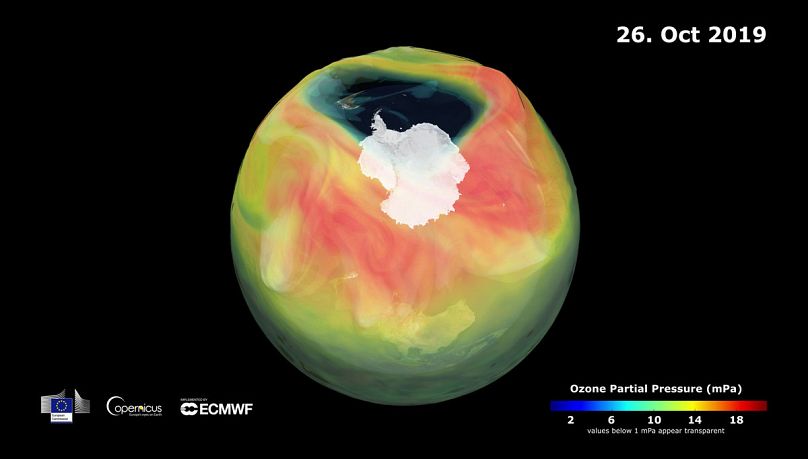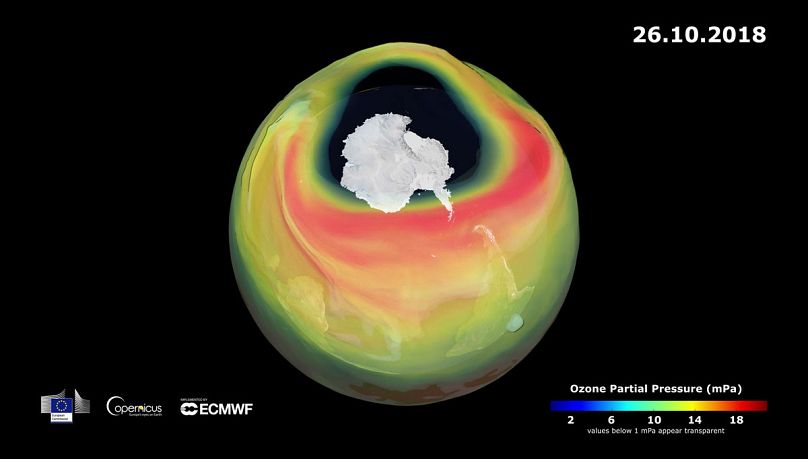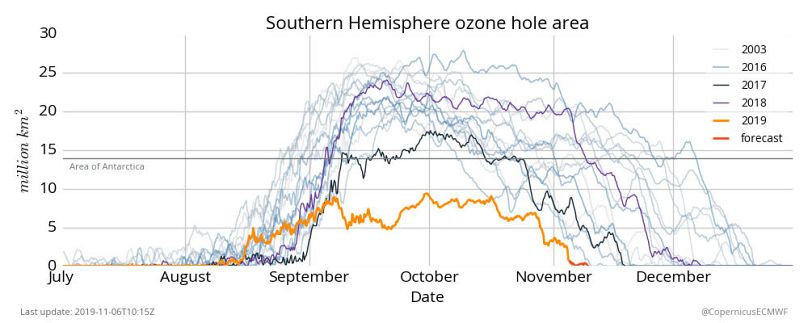Experts warn against getting too excited.
At some point in the next few days, the hole in the ozone layer above the Antarctic will close completely.
Given that the ozone layer is the only thing standing between humankind and the blazing heat of our 15,000,000 Celsius Sun, that is generally considered a good thing.
But scientists warn against breaking out the sustainably-sourced Champagne just yet. Despite growing awareness of the impact of climate change on our planet, the shrinking Antarctic ozone hole has little to do with us.
Instead, it is actually as a result of warmer temperatures in the stratosphere, a layer of the atmosphere roughly seven to 25 miles above the surface of the Earth.
Vincent-Henri Peuch, head of the Copernicus Atmosphere Monitoring Service (CAMS), told Euronews that at the end of August temperatures in the stratosphere were 40º C above average.
That heat weakened the Antarctic polar vortex - an area of swirling cold air over the continent - and effectively knocked it off its usual centre over the South Pole.
That, in turn, prevented chlorofluorocarbons gases - which we know as CFCs - from damaging the ozone layer as much as usual at this time of year.
The UN estimates that the hole has shrunk between one and three percent per decade since the 1986 Montreal Protocol, which banned the use of CFCs in household sprays and fridges.
But while human activity is having some impact on reducing the hole in the ozone layer, Peuch cautions that chlorine and bromine concentrations have only shrunk by small amounts.
He says the impact is unlikely to be significant until 2050 or 2060.
"The Montreal Protocol was a great success," said Peuch, "but it cannot be compared to the challenge of climate change."
Banning CFCs was quite easy, he added, because very few companies used them and they already had alternatives.
But "greenhouse gases come from everywhere," he said, even renewable energy.
For Peuch, this is proof that satellite forecasting models are becoming increasingly reliable because science is more aware of the mechanism of the ozone layer's hole.
Don't let down your guard
Peuch noted that this type of phenomenon had been observed very rarely in history because before the necessary tools were not available. Only once before, in 2002, a similar phenomenon was detected.
"We can't say if the frequency of this phenomenon has evolved or exactly what it's due to."














